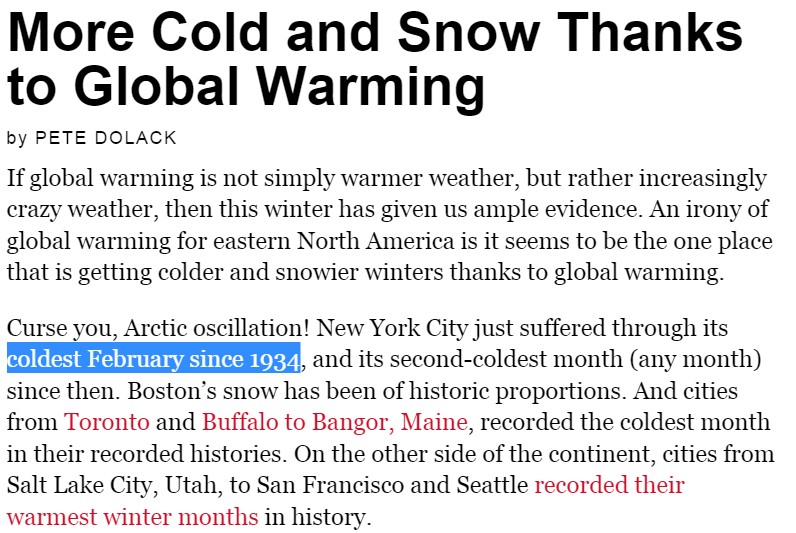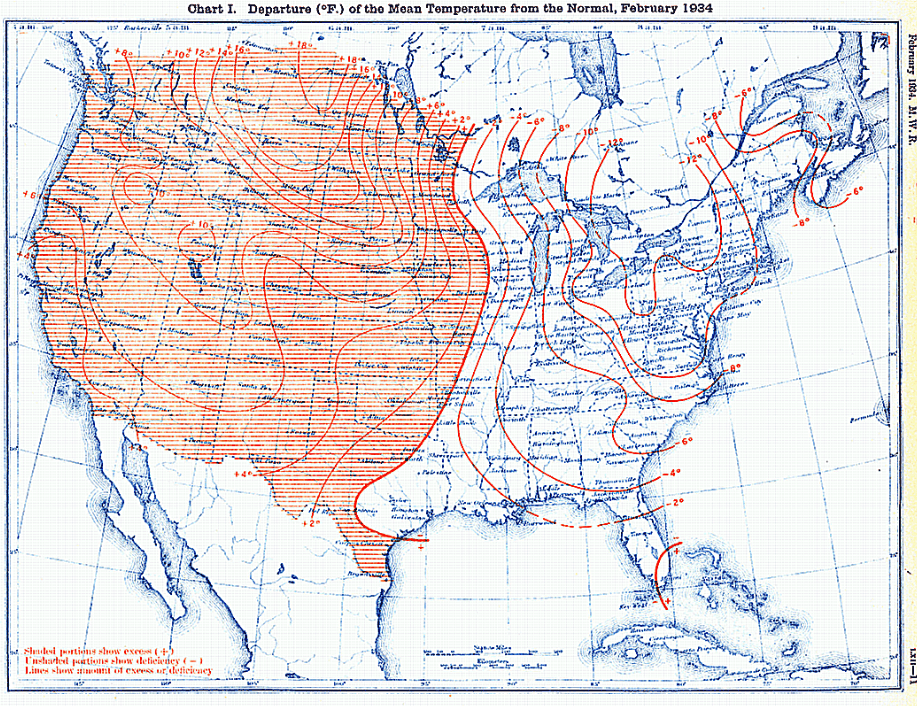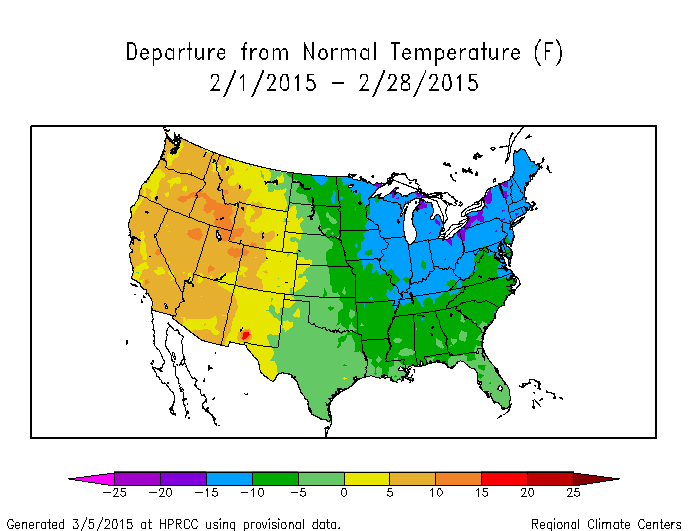In the mind of climate alarmists, the same weather as 1934 proves the climate is changing.
More Cold and Snow Thanks to Global Warming » CounterPunch: Tells the Facts, Names the Name
February 1934 was almost a carbon copy of February 2015
Current Climate Summary Maps – Powered by ACIS – High Plains Regional Climate Center





That would certainly explain the necessity to substitute climate ‘disruption’ for climate ‘change’.
Thanks, Steven. Is there a solar cycle of ~181 years (2015-1934 = 81 yr)?
Correction: Is there a solar cycle of ~81 years (2015-1934 = 81 yr)?
Here’s a report on the ~80-year solar cycle: http://virtualacademia.com/pdf/cli267_293.pdf
Yes there is the ~88 year The Gleissberg cycle. Joan Feynman et al found the cycle in the Nile River records. Is solar variability reflected in the Nile River?
Signature of Hale and Gleissberg solar cycles in the geomagnetic activity
Strong evidence for the influence of solar cycles on a Late Miocene lake system revealed by biotic and abiotic proxies
The Sun, the oceans and the configuration of the continents are the major rulers of our climate. NOx and O2/O3 are also influential. CO2 is a bit player if that.
Another article that cannot get the simple things straight. It was not the coldest month in Toronto’s weather records. It was the 5th coldest.
Everything proves CAGW.
Of course, if it had been mild, then that would be global warming. You cannot win when global warming causes everything. It takes real dedication to be this stupid, phd in stupidity, since there is no global warming. Watch for a global warming induced cool summer.
Do you remember a science fiction movie titled “The Thing”? The monster can take the shape of a dog or a human or, uh, well… just about ANYTHING! http://www.imdb.com/title/tt0084787/
That’s Global Warming! Hot? It’s Global Warming! Drought? Yup, Global Warming! Cold? Rainy? Changeable? You bet! Global Warming, Global Warming, Global Warming! And you know what? It’s gona GET ‘CHA!
The more interesting aspect of the 1934 analog is that the subsequent summers, especially 1936, were the hottest in US experience. Just imagine the reaction if 2016-2017 have super hot summers.
CAGW will be seen as proven beyond any doubt.
Everthing proves global warming